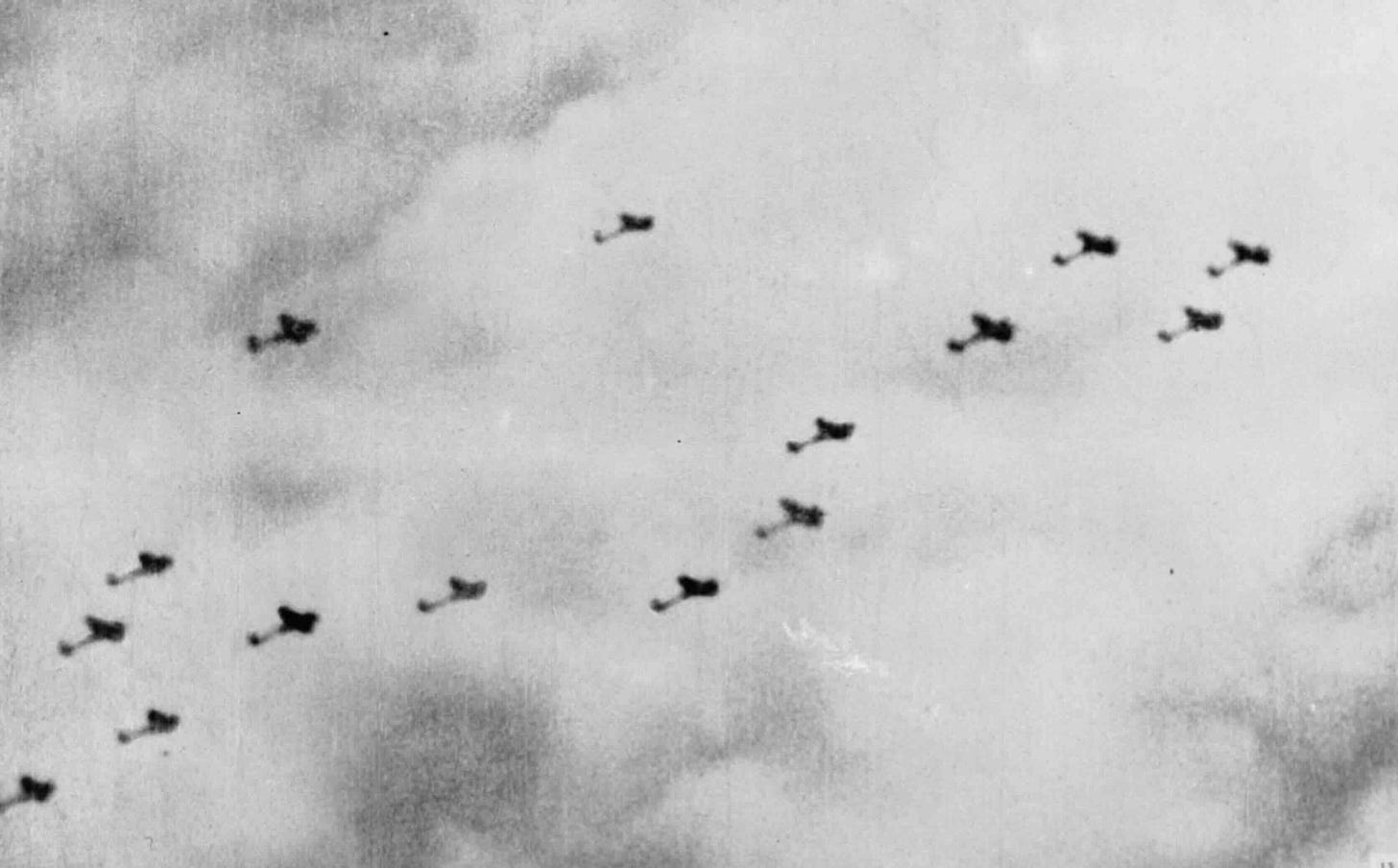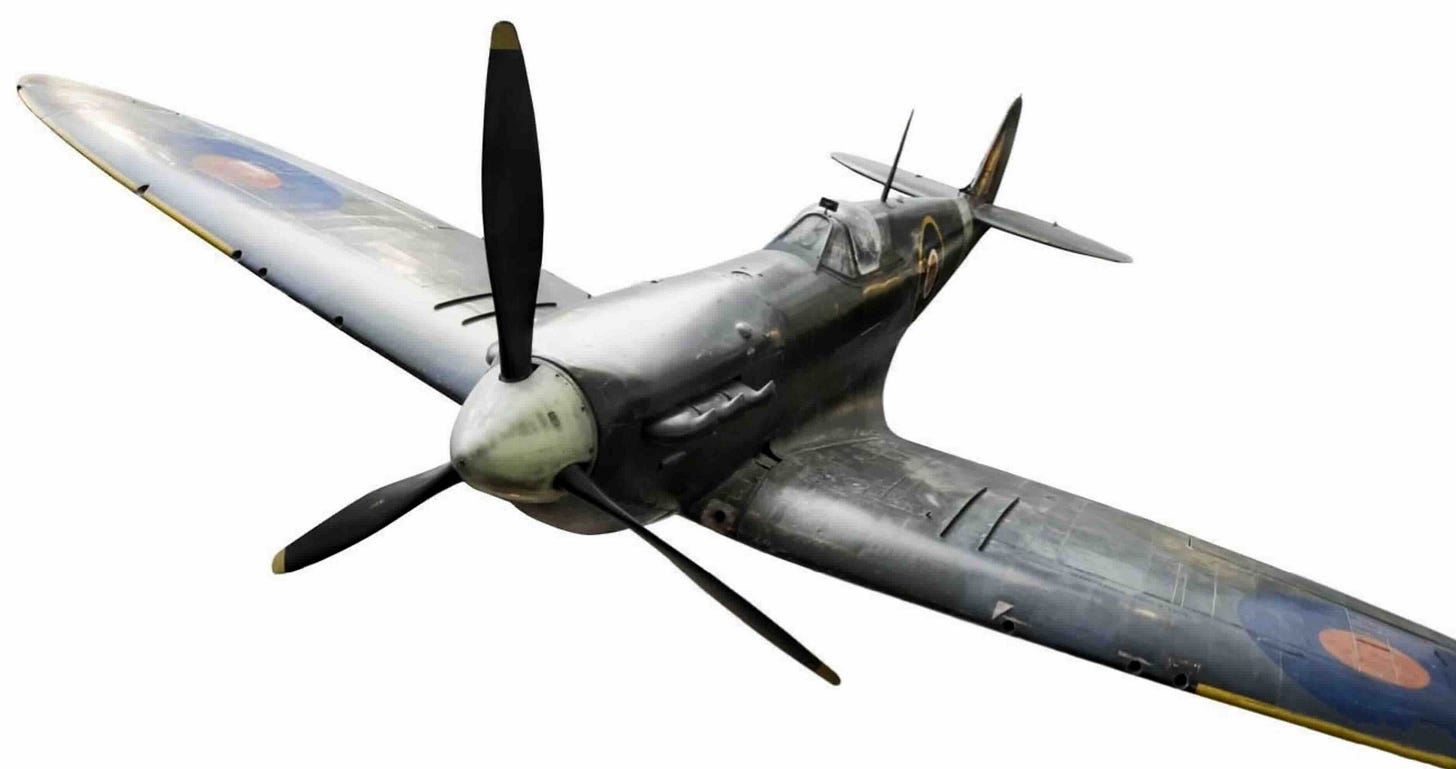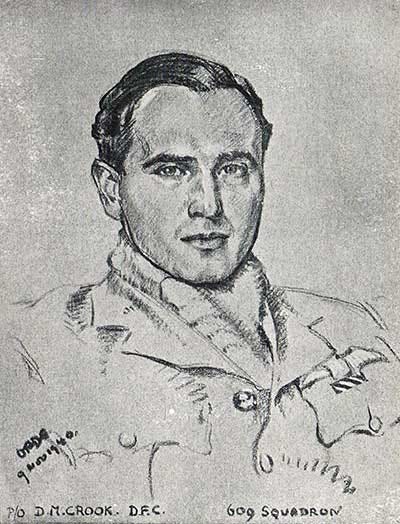'Two Huns in One Action'
30th September 1940: David 'DMC' Crook's memorable day leading 609's Green Section Spitfires out of the sun as Me 109s approach England


As the Battle of Britain continued, the advantages to RAF Fighter Command became ever more apparent. They had a finely tuned system that combined radar early warning and a measured approach to responding to Luftwaffe attacks. They had survived the most testing days when the Luftwaffe attacked their airfields and threw everything they had at them. There was no shortage of fighter aircraft despite the haphazard attacks on aircraft factories. Now they had a cadre of experienced fighter pilots who, through a mixture of luck and skill, had survived the worst days. The product of intense periods of almost continuous action made them more than a match for the enemy.
David ‘DMC’ Crook (1914-1944) was one of these men. He kept a diary throughout the Battle and developed it into Spitfire Pilot1, first published in 1942. This is the story that put wartime readers in the cockpit of a Spitfire through that fateful summer, along with all the tragedies and triumphs experienced by one young man. David Crook saw close friends killed alongside him, had narrow escapes but also experienced success in battle and official recognition. The following excerpt describes just one of those days:
Monday, September 30th, was a very eventful day for me and easily the most successful that I had experienced.
The weather was brilliantly clear, and when we got up, we shook our heads dismally as we knew there would be a lot of trouble! We arrived down at dispersal point about 7.30 a.m., and I walked over to my Spitfire, as I always did first thing every morning, and checked over everything in the cockpit with the utmost care because if we got any orders to “scramble” later, we always had to get off the ground in such a hurry that one had no time to look at anything.
So I checked over the whole machine with great care, looked at the petrol gauges and turned on the petrol, checked that the mixture control was in “Rich” and the airscrew in fine pitch, set the elevator trim, opened the radiator, turned on the oxygen and checked it, switched on the reflector sights, checked the air pressure for the gun system, and switched on the camera gun. Everything was perfect, as indeed it always was. I walked back to the hut, put on my Mae West and started to write up this diary - my daily occupation.
All the rest of the squadron who happened to be on duty were down there too - twelve of us in all, some writing or reading, some asleep, and the rest playing cards.
Soon after 10.30 a.m. we heard the telephone bell ring in the next room, and the telephone orderly ran to our door and yelled in his usual stentorian voice “Squadron scramble, patrol Swanage, Angels 25”



